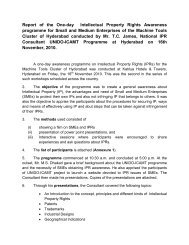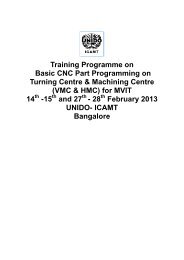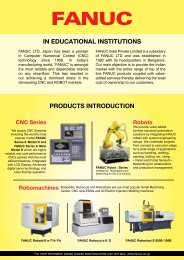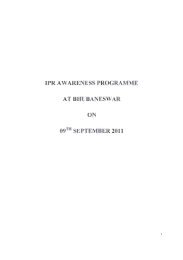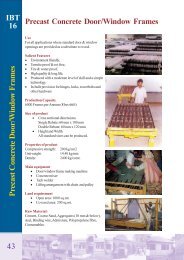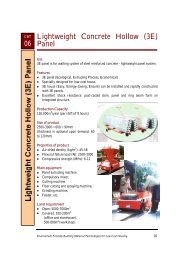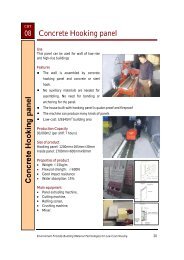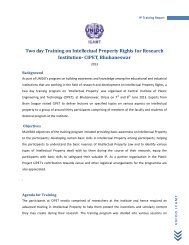Download File Course Material - Annex 2.1 - UNIDO-ICAMT
Download File Course Material - Annex 2.1 - UNIDO-ICAMT
Download File Course Material - Annex 2.1 - UNIDO-ICAMT
You also want an ePaper? Increase the reach of your titles
YUMPU automatically turns print PDFs into web optimized ePapers that Google loves.
Intangible assets included the goodwill, brand value and human assets of a company. The human assets involved the<br />
capabilities, knowledge, skills and talents of employees in an organization.<br />
In the past, less importance was given by organizations to value their human assets. Moreover, it was also considered<br />
difficult to value them since there were no defined parameters of valuation. Companies did not value human resources as<br />
these were never treated as an asset in the past. All investments related to employees, including salary as well as<br />
recruitment and training costs were considered as expenditures.<br />
In addition, accountants also felt that the stakeholders 2 of a company may not accept the concept of placing a monetary<br />
value on human resources.<br />
The importance and value of human assets started to be recognized in the early 1990s when there was a major increase in<br />
employment in firms in service, technology and other knowledge-based sectors 3 . In the firms in these sectors, the<br />
intangible assets, especially human resources, contributed significantly to the building of shareholder value. The critical<br />
success factor for any knowledge-based company was its skilled and intellectual workforce.<br />
HRA in Practice at Infosys<br />
Infosys' HRA model was based on the present value of the employees' future earnings with the following assumptions:<br />
• An employee's salary package included all benefits, whether direct or otherwise, earned both in India and in a<br />
foreign nation.<br />
• The additional earnings on the basis of age and group were also taken into account.<br />
To calculate the value of its human assets in 1995-96, all the 1,172 employees of Infosys were divided into five groups,<br />
based on their average age. Each group's average compensation was calculated. Infosys also calculated the compensation<br />
of each employee at retirement by using an average rate of increment...<br />
HRA - The Benefits and Hurdles<br />
The benefits of adopting HRA were manifold. It helped an organization to take managerial decisions based on the<br />
availability and the necessity of human resources. When the human resources were quantified, it gave the investors and<br />
other client’s true insights into the organization and its future potential. Proper valuation of human resources helped<br />
organizations to eliminate the negative effects of redundant labor.<br />
This, in turn, helped them to channelize the available skills, talents, knowledge and experience of their employees more<br />
efficiently. By adopting and implementing HRA in an organization, the following important information could be<br />
obtained:<br />
• Cost per employee<br />
• Human capital investment ratio<br />
• The amount of wealth created by each employee<br />
• The profit created by each employee<br />
• The ratio of salary paid to the total revenue generated<br />
• Average salary of each employee<br />
• Employee absenteeism rates<br />
• Employee turnover rate and retention rate...<br />
60



